Performing an investigation in case any type of deviation occurs is of fundamental importance nowadays and root-cause analysis methodologies play a fundamental role within the regulated environment.
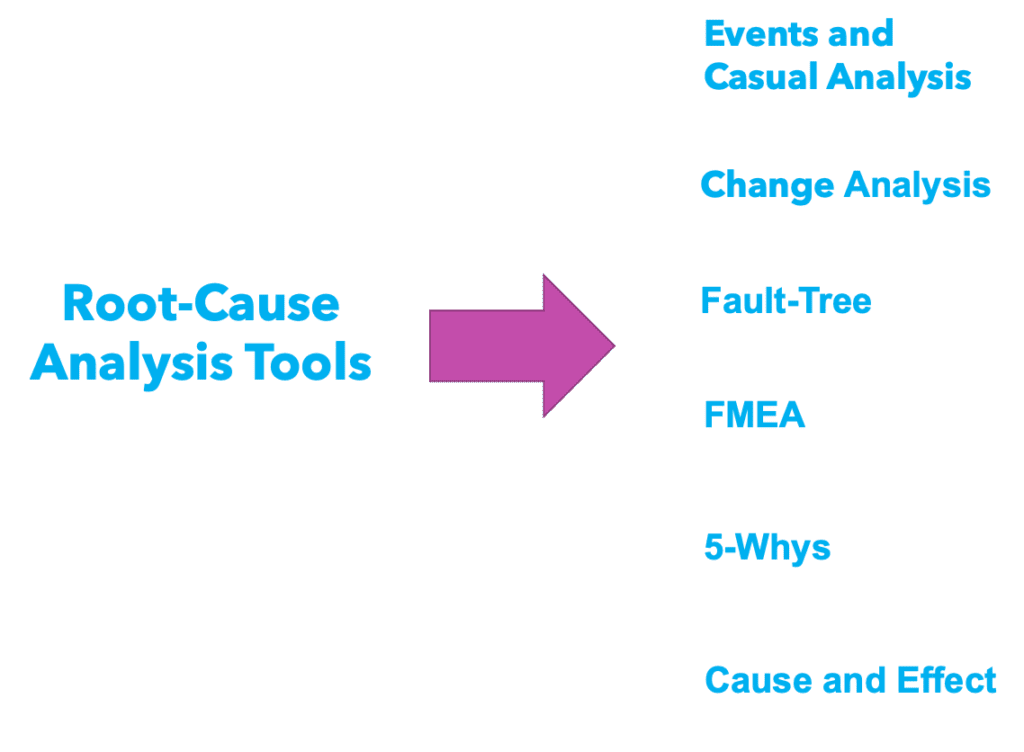
Events and Casual Analysis
The Events and Casual analysis is a tool that describes the necessary events and causal factors for accident occurrence in a logical sequence. It is a classic method for root-cause analysis. From practical point of view, it is a chart which has the timeline as heart of the chart. Specific symbols are used to define the type of interconnections between the different events that led to the issue.
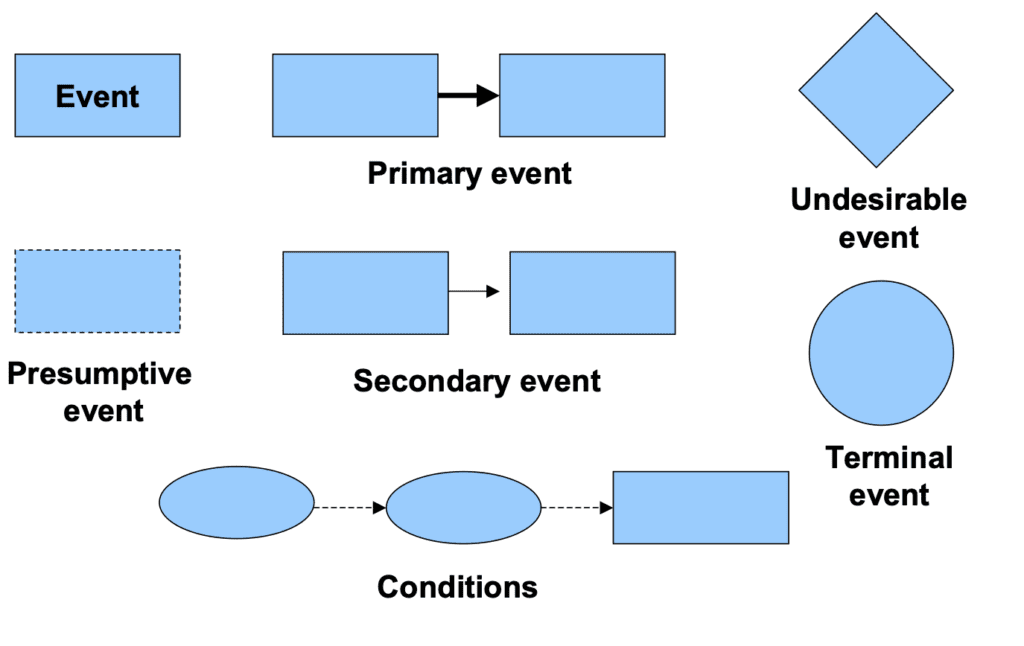
Other symbols that can be used to describe interconnections are these following:
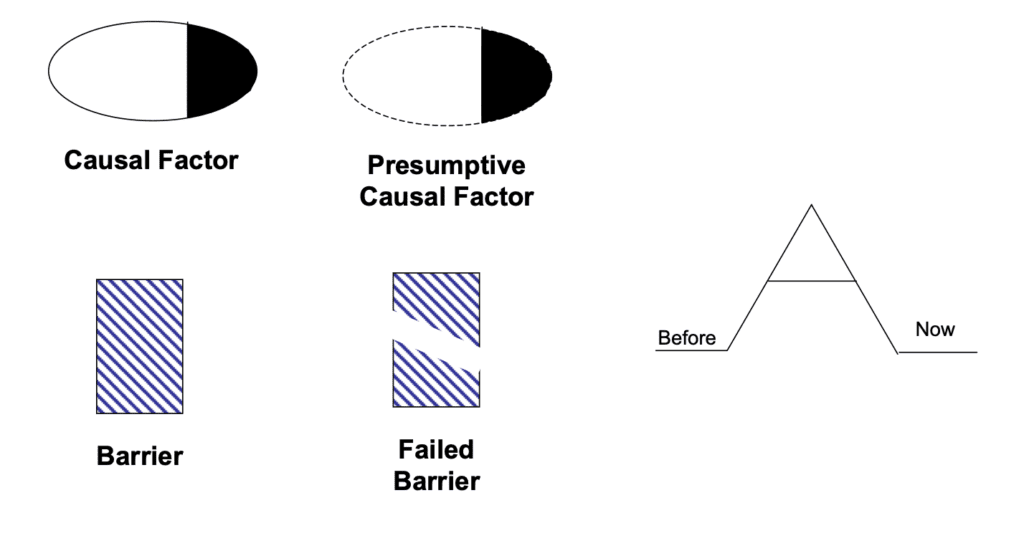
This method is based on some principles, mainly the following:
- All the negative events are caused to happen.
- Undesirable events are caused by additional causes.
- The root cause(s) can be determined by analyzing the cause-effect relationships around a primary effect.
Let me assume that the deviation we want to investigate is a non-conformity due to a missing records for a specific training on a defined QMS procedure.
Change Analysis : Kepner-Tregoe Method for root-cause determination
Another tool for root-cause analysis is the so-called Change Analysis, which Kepner-Tregoe method. In fact this methodology was developed by Benjamin Tregoe and Charles Kepner, whom performed extensive research on rational decision making and problem solving.
The Kepner Tregoe method is a problem analysis model in which the “problem” is disconnected from the “decision”. This method is basically based on four different steps:
- Situational Analysis
- Problem Analysis
- Decision Analysis
- Potential Problem Analysis
Situational Analysis
The situational analysis is the first step and the goal is to answer the question “What is happening?”. Specifically, this phase involves the identification of concerns, setting priorities and planning activities for the next steps. The main focus of the situational analysis is to set priorities and avoids to work on the wrong issue.
Problem Analysis
Problem analysis helps to answer the question “What Went Wrong?”. The problem analysis helps sharpen the focus on the right data and helps avoid the tendency to arrive at the wrong cause because irrelevant data or facts have been taken in considerations. The problem analysis includes the following:

Decision Analysis
The output of the problem analysis plus all the possible alternatives that could be identified to resolve the problems and the related risk assessment for each of the options identified are the key factors of a decision analysis. In any case the risk assessment is the core of this step and all the possible solutions shall be evaluated from risk point of view.
Potential Problem Analysis
Before rushing into action making your decision take hold throughout the organization, think about the various issues that may come up and how they will be dealt with. This is a preventive step to evaluate all the possible issues that might come up after all the corrective actions have been implemented.
Fault Tree Analysis: widely used tool for root-cause analysis
Fault tree analysis was initially developed for the aerospace sector and extensively used by the Boeing company before becoming a widely used method for root-cause analysis.
Fault tree diagrams (or negative analytical trees) are logic block diagrams that display the state of a system (top event) in terms of the states of its components (basic events).
From practical point of view, the fault trees are built using gates and blocks. Usually the most common gates are AND and OR. Then, there is a whole set of symbols that could either Gate Symbols or Events Symbols.
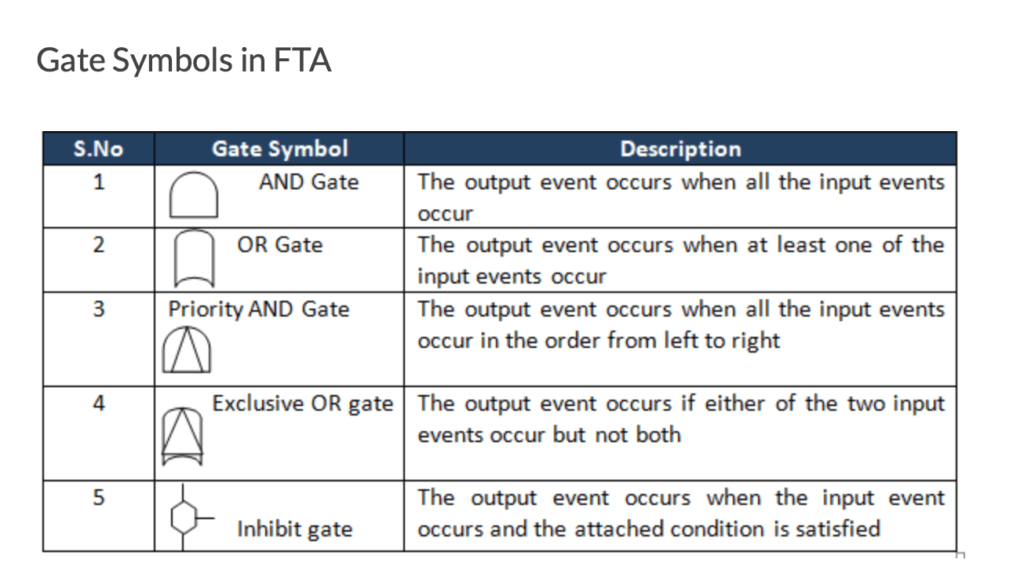
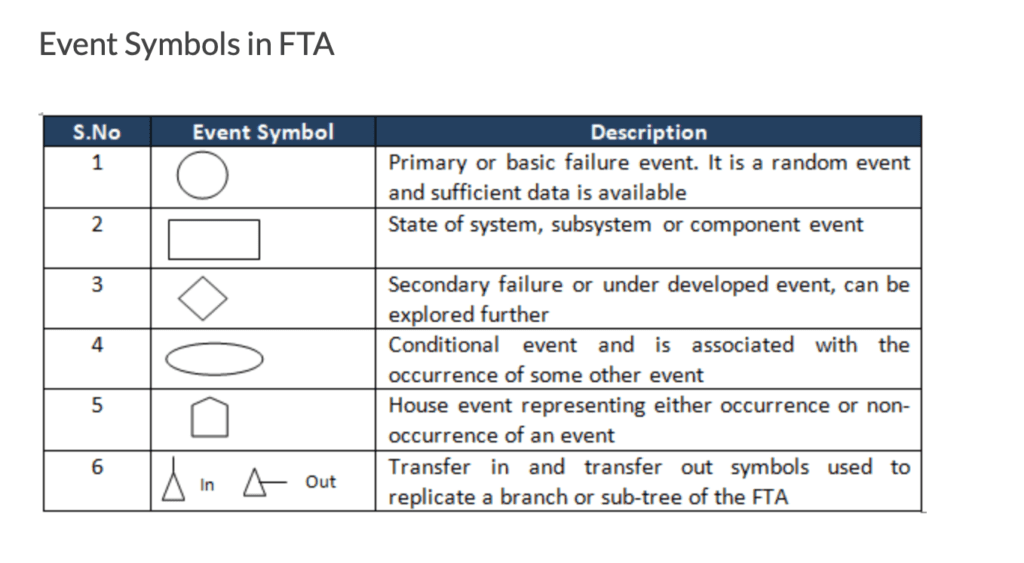
5 Whys
The 5 Whys is a widely used technique which is part of the Analyze phase of the Six Sigma DMAIC (Define, Measure, Analyze, Improve, Control) methodology. It is a great Six Sigma tool that does not involve any use of statistical tools. By repeatedly asking the question “Why” (five is a good rule of thumb), you can peel away the layers of symptoms which can lead to the root cause of a problem. Very often the ostensible reason for a problem will lead you to another question.
Failure Mode Effect Analysis
The failure mode effect analysis it is usually a tool used for risk assessment and analysis of risks, either for a process or for a product. However it is a method that it is used as well for root-cause analysis, because it correlates the specific failure with:
- The effect that the specific failure could impart
- The cause in relation to the specific failure.
The FMEA is using a preventive approach as it does not need a specific event to be used. Rather, it is a technique that is used to envision all the possible failure modes that could happen within a specific system, and the related potential effect and related root-cause.
Subscribe to 4EasyReg Newsletter
4EasyReg is an online platform dedicated to Quality & Regulatory matters within the medical device industry. Have a look to all the services that we provide: we are very transparent in the pricing associated to these consulting services.
Within our WebShop, a wide range of procedures, templates, checklists are available, all of them focused on regulatory topics for medical device compliance to applicable regulations. Within the webshop, a dedicated section related to cybersecurity and compliance to ISO 27001 for medical device organizations is also present.
As one of the leading online platforms in the medical device sector, 4EasyReg offers extensive support for regulatory compliance. Our services cover a wide range of topics, from EU MDR & IVDR to ISO 13485, encompassing risk management, biocompatibility, usability, software verification and validation, and assistance in preparing technical documentation for MDR compliance.
Do not hesitate to subscribe to our Newsletter!
